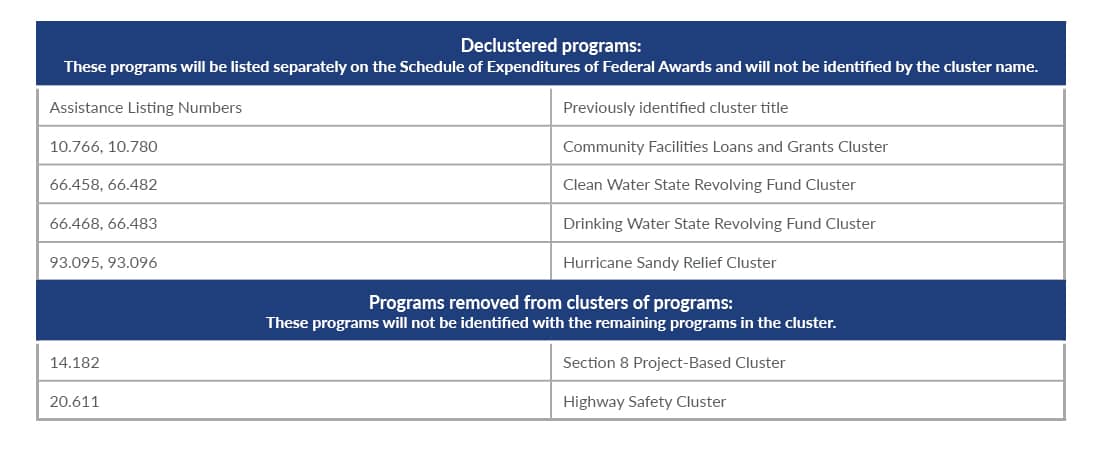Are you using the Office of Management and Budget (OMB) 2024 Compliance Supplement to prepare for your audit? If not, it’s well worth adding to your resource toolbox. The Compliance Supplement isn’t only a critical document used by auditors to complete single audits, but it’s also a valuable resource for nonfederal entities because it helps explain the audit process and testing requirements that you’ll be subject to. You’ll also find information that provides valuable insights into certain OMB actions and decisions. It’s like having a front-row seat into the questions and testing you may expect during a single audit.
Knowing the contents of the Compliance Supplement is an essential part of a best-in-class control environment to administer federal grants. The latest version — applicable for single audits of fiscal years ending June 30, 2024, and after — was released on May 29, 2024. You can access the full 2024 Compliance Supplement here, but here are five key considerations to review now.
1. Programs with higher risk designation
In accordance with the Uniform Guidance, the OMB has the authority to identify federal programs that are higher risk. This identification is only communicated via the Compliance Supplement. Due to the way auditors are required to select programs for testing during the single audit, be aware that programs that have been designated as higher risk will most likely be subject to detailed audit procedures once the program expenditures reach a certain level. Knowing which programs these are could help you understand which ones might be selected by your auditors for testing.
The OMB has removed five programs from the higher risk designation list, and no new programs were added. The programs identified as higher risk in the 2024 Compliance Supplement are shown below:

2. Clusters of programs
Part 5 of the Compliance Supplement identifies those programs that are clusters of federal programs. As defined by 2 CFR Section 200.1, a cluster of programs means a grouping of closely related programs that share common compliance requirements. A cluster of programs must be considered as one program for determining major programs. OMB “declustered” certain clusters of programs and removed certain programs from their respective clusters in the 2024 Compliance Supplement. Knowing these changes is important to ensure the Schedule of Expenditures of Federal Awards is accurate. The changes are as follows:

3. Increased audit threshold to $1,000,000
The audit threshold sets the bar for when a single audit is required. As specified in the Uniform Guidance, Subpart F, a single audit is required for a nonfederal entity that expends $750,000 or more in federal awards during the entity’s fiscal year. The revisions made in April 2024 to Uniform Guidance increased the audit threshold from $750,000 to $1,000,000. The 2024 Compliance Supplement clarifies the effective date for the increased single audit threshold. The increased threshold is effective for auditee fiscal years beginning on or after Oct. 1, 2024, (i.e., it’s effective for single audits for auditees with fiscal year-ends Sept. 30, 2025, and after.)
4. Matrix of compliance requirements (Part 2)
This part identifies the compliance requirements that federal agencies have determined are subject to audit. As an auditee, you can use this information to help provide insight into which compliance requirements your auditors will test for each of your major programs. There were several changes this year to this matrix, including deleted programs, added programs, and changes to which compliance requirements are subject to audit for existing programs.
5. Build America, Buy America Act
Effective May 14, 2022, a nonfederal entity is required to ensure that all applicable federal programs comply with Section 70914 of the Build America, Buy America Act, which includes a requirement that project awards include incorporation of a domestic content procurement preference for all federal financial assistance obligated for infrastructure projects. Compliance with the act was first included in the scope of an auditor’s single audit testing, when applicable, in the 2023 Compliance Supplement. The 2024 Compliance Supplement adds an additional testing requirement by stipulating that the auditor test the nonfederal entity’s monitoring of the contractor’s compliance with the act. If you’ve been informed of these requirements, such as through the award terms and conditions, you must comply with them.
We encourage you to read Part 8 Appendix V of the 2024 Compliance Supplement to understand the full scope of this year’s changes.
For more information on the 2024 Compliance Supplement, check out our webinar, “2024 Compliance Supplement and Single Audit Update.”
Be sure to subscribe to our alerts for additional articles.





